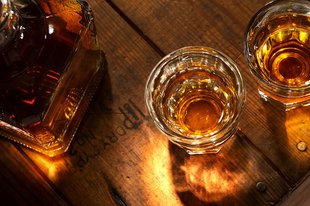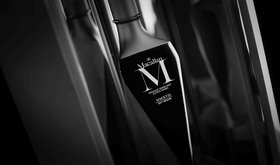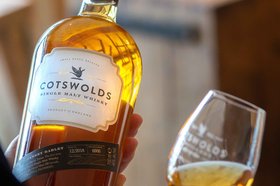Scotch vs Bourbon (4 Main Differences, Best Bottles to Buy)
Scotch and bourbon are renowned types of whiskey, known for their unique production processes and regional influences. These aspects contribute to the distinct flavors that make them a captivating choice for whiskey enthusiasts.
The diverse aging methods enhance their exceptional taste profiles, giving them distinct identities.
In this article, we’ll delve into the captivating world of scotch and bourbon, the key differences, how to choose between the two, the different types of whiskey available, and if you should invest in them.
You’ll also discover an easy way to invest in whiskey casks through Vinovest.
Further reading
- Considering a long-term investment? Try Whiskey Investment to make good returns.
- If you love wine, dive into our complete guide to Investing in Fine Wine.
4 Key Differences between Scotch and Bourbon
Ready to unveil the four fundamental differences between scotch and bourbon?
1. Ingredients Used
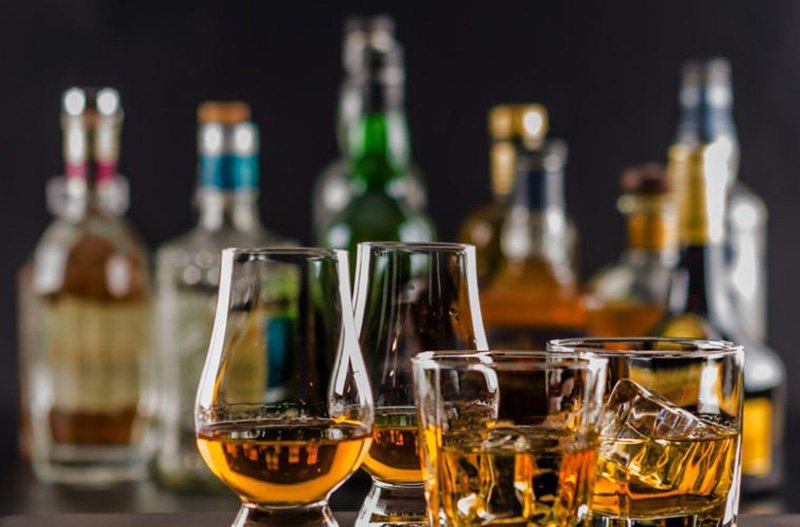
Scotch whisky is primarily made from malted barley, which is malted and fermented before distillation. The use of barley contributes to the range of flavors found in scotch, including malty, nutty, and sometimes floral notes.
Some scotch whiskies also incorporate other grains like corn, wheat, or rye in varying proportions for additional complexity.
Bourbon's main ingredient is corn, which must constitute at least 51% of the grain mixture. The higher corn content gives bourbon its characteristic sweetness.
It is often complemented with other grains like barley, rye, and wheat, each contributing its unique flavor profile. Rye provides spiciness, while wheat adds softness and smoothness.
2. Geographic Origin

Scotch whisky is synonymous with Scotland, a country renowned for its long-standing whisky tradition. The Scottish terroir, including the water and peat used in the production process, influences the character and flavors of scotch whiskies.
Different regions, such as Islay, Speyside, and Highland, further contribute to the diversity of scotch whisky styles.
The production of bourbon is not limited to a specific region within the United States. But it’s closely associated with Kentucky (aka Bourbon County), often called the birthplace of bourbon.
The limestone-rich water in Kentucky plays a role in the production process, adding its own distinct character to the whiskey. With its hot summers and cold winters, Kentucky's climate also affects the aging process, leading to unique flavors.
3. Aging Process

Scotch whiskies are typically aged for a minimum of three years in oak barrels. Many scotch whiskies undergo significantly longer aging periods, ranging from 10 to 25 years or more.
The type of oak barrel used, such as ex-bourbon barrels or sherry casks, contributes to the flavor development, with the whisky absorbing flavors and aromas from the wood.
To be classified as bourbon, it must be aged in new, charred oak barrels. The aging process for bourbon varies, but the minimum requirement is two years. Many bourbons age for four to twelve years or longer, allowing them to develop complex flavors and aromas.
The new oak barrel imparts flavors of caramel, vanilla, and oak to the bourbon.
4. Flavor Profile and Tasting Notes
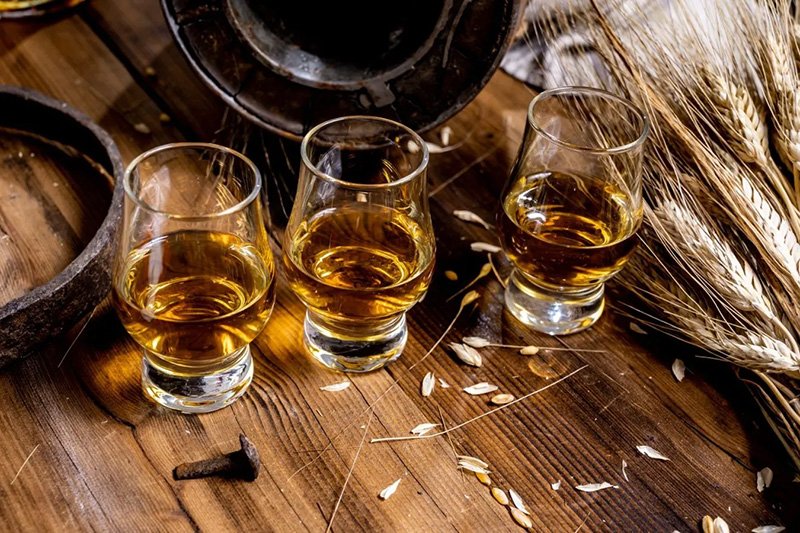
Scotch whiskies showcase a broad range of flavor profiles.
- Islay whiskies are known for their smoky and peaty character, with notes of seaweed and brine.
- Speyside whiskies often exhibit fruity, floral, and honeyed flavors.
- Highland whiskies can vary from light and floral to rich and full-bodied, with hints of heather, spices, and dried fruits.
- The Lowland region produces lighter, gentler whiskies with delicate floral and citrus notes.
Kentucky bourbon is characterized by its distinctive sweetness, often accompanied by flavors of caramel, vanilla, and oak.
The higher corn content contributes to the smooth and rich mouthfeel. Some bourbons may have hints of spices, such as cinnamon or nutmeg, and fruity undertones.
The exact flavor profile varies across brands and expressions, influenced by the mash bill, yeast strains, and aging process.
5. Price Range

Scotch is often regarded as a luxurious item, with specific types and ages being coveted as rare commodities. This leads to higher market values and allows distributors to command premium prices.
Production costs and the price of grains, including barley, play a significant role in determining costs. Barley tends to be more expensive to purchase, cultivate, and harvest.
For example:
- The Macallan Lalique 55-Year-Old Single Malt Scotch Whisky, Speyside - Highlands, Scotland ($225,00)
- Bowmore Aston Martin 'Black Bowmore DB5' Single Malt Scotch Whisky, Islay, Scotland ($157,402)
Compared to scotch, Kentucky bourbon typically carries a lower price tag due to the cost-effective and straightforward cultivation and harvesting of corn.
For example:
- Old Rip Van Winkle Handmade Family Reserve 16-Year-Old Kentucky Straight Bourbon Whiskey, USA ($36,569)
- Redemption 36-Year-Old Barrel Proof Straight Bourbon Whiskey, USA ($36,566)
Now, let’s explore Scotch and Bourbon in detail.
What is Scotch?
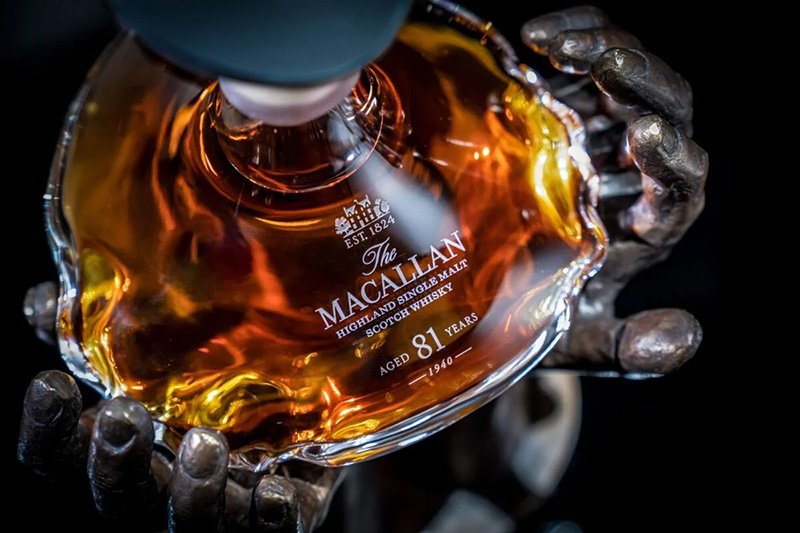
Scotch whisky is a type of whiskey that originates from Scotland.
It is made primarily from malted barley and a minimum of three years is dedicated to aging it within an oak barrel. It’s bottled at a minimum alcoholic strength of 40% alcohol by volume.
Scotch is renowned for its diverse flavor profiles, ranging from smoky and peaty to fruity and floral. These flavors are influenced by factors such as the region of production and the production techniques employed by distilleries.
It is celebrated for its rich heritage, craftsmanship, and adherence to traditional methods. Scotch whisky is cherished worldwide as a symbol of Scottish culture and is enjoyed both neat and in a variety of cocktails.
How Is Scotch Whisky Made?
Here’s a quick look at a whiskey maker's meticulous process:
- Malting: Barley is germinated, dried, and ground into a coarse powder known as grist.
- Mashing: Grist is mixed with hot water to create a sugary liquid called wort.
- Fermentation: Yeast is added to the wort, fermenting sugars into alcohol to create "wash."
- Distillation: Wash is distilled in copper pot stills or column stills to separate alcohol from impurities.
- Maturation: The distilled spirit is aged in an oak cask, developing complex flavors and aromas.
Types of Scotch Whisky
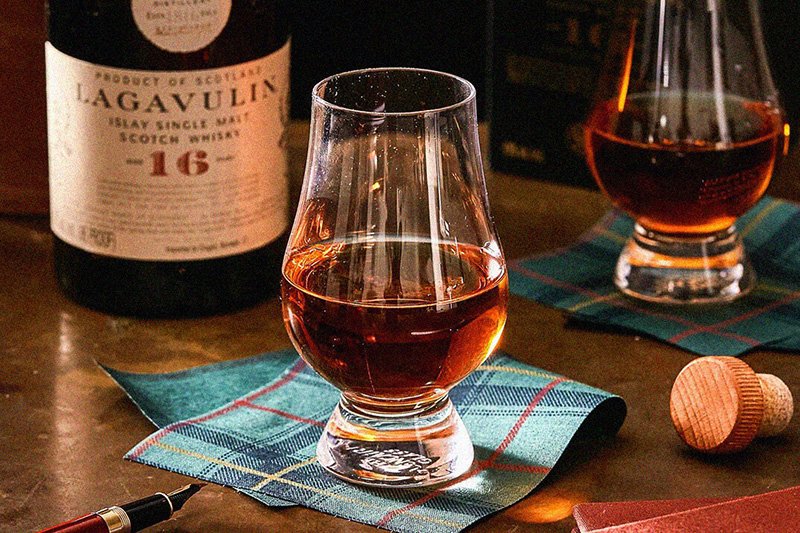
Scotch offers a diverse range of options to suit every discerning palate. Here are the main types of scotch:
- Single Malt Scotch: Made from 100 malted barley and distilled at a single distillery, single malt scotch is known for its rich and complex flavors. It showcases the unique characteristics of the distillery's production methods and the influence of the region.
- Blended Scotch: Blended scotch combines malt and grain whiskies sourced from different distilleries. Master blenders carefully select and marry various whiskies to achieve a consistent and balanced flavor profile.
- Single Grain Scotch: Distilled from grains other than barley, single grain scotch offers a lighter and smoother profile compared to single malt. It is usually used as a base for blended scotch whisky.
- Blended Malt Scotch: Also known as vatted malt or pure malt, blended malt scotch is a mix of single malt whiskies from multiple distilleries. It allows blenders to create complex and nuanced flavor profiles.
- Blended Grain Scotch: Blended grain scotch combines single grains from multiple distilleries. It offers a lighter and more approachable style compared to single grain or single malt scotch.
How Is Scotch Whisky Different From Other Whiskies?
Let’s see how scotch compares with other types of whiskey like Canadian, American, and Japanese varieties.
- Canadian Whisky: Lighter and smoother in flavor than scotch, Canadian whisky blends various grains like corn, rye, barley, and wheat.
- American Whiskey: American whiskey, such as bourbon, offers a sweeter and richer profile with notes of caramel and oak compared to scotch.
- Japanese Whisky: Drawing inspiration from scotch, Japanese whisky focuses on craftsmanship. It ranges from delicate and elegant to rich and smoky, combining Japanese and scotch whisky traditions.
Let’s now look at Bourbon in detail.
What is Bourbon?

Bourbon is a type of American whiskey distilled from a grain mixture, primarily consisting of corn along with barley and rye.
It is aged in a new, charred oak barrel for a minimum of two years and bottled at a minimum of 80 proof (40% alcohol by volume).
The resulting spirit is known for its distinctive sweetness and notes of vanilla, caramel, and oak, with a warming, sometimes spicy finish.
To be considered bourbon, the whiskey must be produced in the United States, with strict regulations and guidelines for its production and labeling.
How Is Bourbon Made?
Here’s a brief overview of a whiskey maker’s distillation process to make bourbon:
- Malting: Bourbon begins with a grain mixture, with at least 51% being corn.
- Mashing: The grains are ground into a coarse meal, combined with water, and cooked to create a mash.
- Fermentation: Yeast is added to initiate fermentation, converting sugars into alcohol, resulting in "distiller's beer" or "wash."
- Distillation: The wash is distilled in a still, separating alcohol from impurities, concentrating flavors and increasing alcohol content.
- Maturation: The distilled spirit, called “white dog," is diluted with water and aged in a new, charred oak barrel.
Types of Bourbon

There are many types of bourbon, each offering distinct characteristics. Here are the most popular:
- Straight Bourbon: Aged for a minimum of two years, it meets specific requirements and offers classic bourbon flavors.
- Small Batch Bourbon: Crafted in limited quantities, it blends select barrels for a unique and refined flavor profile.
- Single Barrel Bourbon: Bottled from a single barrel, single barrel bourbon is of premium quality and showcases individual characteristics with a distinct taste.
- Sour Mash Bourbon: This uses a portion of previously fermented mash to start the fermentation process for each new batch, ensuring consistency and flavor.
- Bottled-in-Bond Bourbon: Thismeets strict regulations of the 1897 Bottled-in-Bond Act, aged for at least four years, and bottled at 100 proof for exceptional quality.
- Wheated Bourbon: Uses a higher proportion of wheat, resulting in a smoother, sweeter profile.
How Does Bourbon Compare With Other Types of Whiskey?
- Canadian Whiskey: Bourbon is sweeter and richer with a higher corn content, while Canadian whiskey is lighter and smoother.
- Other American Whiskey: Bourbon is known for its sweetness, while other American styles like Rye offer spicier flavors.
- Japanese Whiskey: Japanese whiskey draws inspiration from scotch, showcasing delicate and nuanced flavors. Bourbon has a bolder, sweeter profile with distinct cultural influences.
Different Types of Whiskey
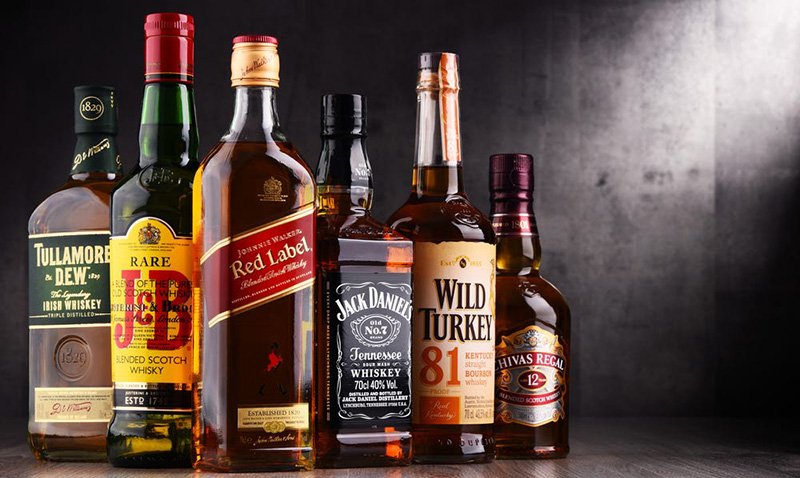
There are many types of whiskey (distilled grain spirit), spanning continents and cultures. Aside from bourbon and scotch, here are some of the most popular types of whiskey:
- Irish Whiskey (or Irish Whisky)
- Rye Whiskey (or Rye Whisky)
- Tennessee Whiskey
- Corn Whiskey
- Malt Whisky
- Wheat Whiskey
- Single Malt Whisky
- Blended Malt Whisky
- Single Grain Whisky (or Grain Whiskey)
- Blended Grain Whisky
- Blended Whiskey (or Blended Whisky)
- Japanese Whisky
- Canadian Whisky
Scotch vs Bourbon: How Do You Choose?
Let’s decipher how to choose between scotch and bourbon:
Flavor Profile and Personal Preference

If you enjoy a wide range of flavors with smoky, peaty, fruity, or floral notes, Scotch whisky might be a suitable choice.
On the other hand, if you prefer a sweeter, richer profile with notes of caramel, vanilla, and oak, Bourbon may be more appealing.
Occasion

Think about the occasion or setting in which you plan to enjoy the whiskey.
Scotch whisky often carries a sense of elegance and sophistication, making it fitting for special occasions or formal gatherings.
Bourbon, with its warm and approachable character, is well-suited for casual gatherings, cozy evenings, or social events.
Food Pairing
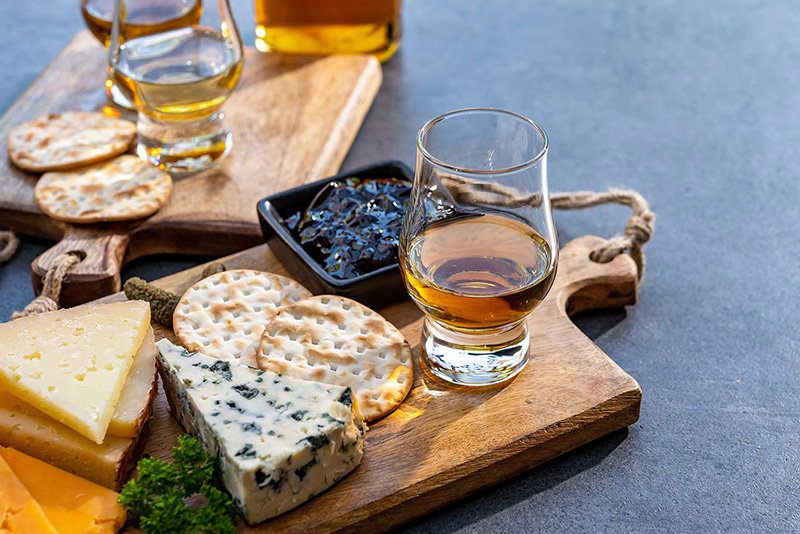
With its diverse flavor profiles, Scotch whisky can be paired with various foods. For example, smoky and peaty scotches can complement rich meats or cheeses, while lighter and fruitier expressions can enhance seafood or desserts.
With its sweet and robust flavors, bourbon pairs well with barbecued meats, grilled dishes, and desserts featuring caramel or chocolate.
Cocktails
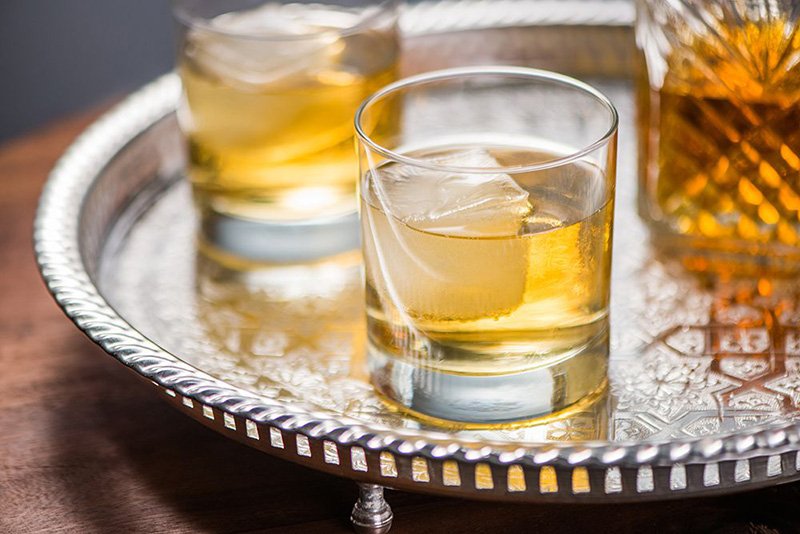
While scotch and bourbon are fantastic sippers straight up or on the rocks, you can also enjoy these spirits in delicious cocktails.
So you can choose between the two spirits depending on your choice of cocktail.
- Penicillin (with Scotch): A modern scotch-based cocktail with a delightful blend of smoky and citrus flavors. To make a Penicillin, mix 2 ounces of blended scotch whisky, ¾ ounce of fresh lemon juice, ¾ ounce of honey syrup (equal parts honey and water), and a splash of smoky Islay scotch. Vigorously shake with ice, then strain into a rocks glass filled with ice for the perfect serving. Garnish with a piece of candied ginger.
- Blood and Sand (with Scotch): This classic cocktail balances the richness of scotch whisky with the sweetness of orange and cherry flavors. In a shaker, combine 1 ounce of scotch whisky, 1 ounce of sweet vermouth, 1 ounce of orange juice, and 1 ounce of cherry liqueur. Give it a vigorous shake with ice, then strain it into a cocktail glass. Garnish with an orange twist.
- Old Fashioned (with Bourbon): A timeless cocktail that highlights the flavors of bourbon. To make an Old Fashioned, gently muddle a sugar cube and a few dashes of aromatic bitters in a tall glass. Add 2 ounces of bourbon and a large ice cube. Gently stir to meld the flavors, and garnish with an orange twist and a cherry.
- Mint Julep (with Bourbon): A refreshing and iconic bourbon-based cocktail, particularly popular during the Kentucky Derby. In a julep cup or glass, muddle a few fresh mint leaves with a teaspoon of sugar or simple syrup. Add crushed ice and 2 ½ ounces of bourbon. Stir and add a sprig of fresh mint as garnish.
The question is — can you invest in scotch and bourbon?
Investing in Scotch and Bourbon
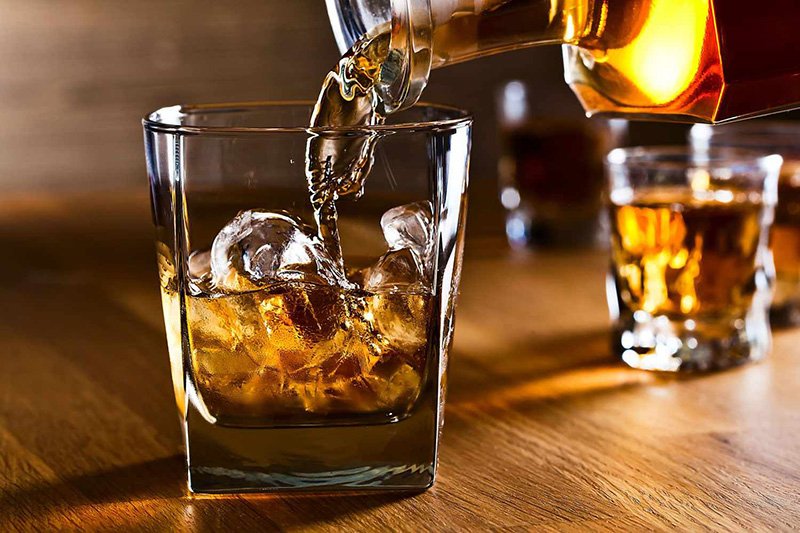
Scotch and bourbon have gained attention as potential investments due to their increasing popularity and the potential for price appreciation over time.
Both scotch and bourbon offer limited editions, single cask releases, and rare expressions that are highly sought after by collectors and investors.
These limited releases can have the potential to appreciate in value as they become scarcer over time. For instance, between 2022 and 2023:
- The Macallan 'The Reach' 81-Year-Old Single Malt Scotch Whisky rose by 48% from $282,798 to $417,486.
- Old Rip Van Winkle 25-Year-Old Kentucky Straight Bourbon Whiskey rose by 28% from $42,019 to $53,605.
Some Scotch whiskies to consider investing include:
- 2018 Glenfiddich 'Rare Collection' 50-Year-Old Single Malt Scotch Whisky, Speyside, Scotland ($46,688)
- The Macallan Lalique 55-Year-Old Single Malt Scotch Whisky, Speyside - Highlands, Scotland ($202,593)
- Royal Salute The Time Series Single Cask Finish 52-Year-Old Blended Scotch Whisky, Scotland ($32,633)
- 1960 North British Distillery The Incorporation Selection 58-Year-Old Single Grain Scotch Whisky, Lowlands, Scotland ($2,165)
- Chivas Regal The Icon Blended Scotch Whisky, Scotland ($3,287)
Some bourbon whiskies to consider investing include:
- Old Rip Van Winkle 25-Year-Old Kentucky Straight Bourbon Whiskey, USA ($55,164)
- Michter's 25-Year-Old Single Barrel Bourbon Whiskey, USA ($12,403)
- Four Roses '50th Anniversary Al Young' Limited Edition Small Batch Barrel Strength Kentucky Straight Bourbon Whiskey, USA ($2,748)
- W. L. Weller Centennial 10-Year-Old Kentucky Straight Wheated Bourbon Whiskey, USA ($3,324)
- Jim Beam 1795 Kentucky Straight Bourbon Whiskey, USA ($858)
Factors such as age, distillery reputation, historical significance, and quality play a crucial role in determining the investment potential of a scotch or bourbon.
Older expressions from established distilleries with a track record of producing high-quality whiskies are generally more likely to increase in value.
Investing in scotch and bourbon requires a deep understanding of the market dynamics, industry trends, and the factors that influence value appreciation.
By diligently researching and staying abreast of industry developments, you can equip yourself to make well-informed investment choices.
Better yet, consider investing in whiskey casks with a trusted online platform like Vinovest.
Invest in Whiskey Casks Through Vinovest

Vinovest can help you buy, store, and sellrare whiskey barrels from anywhere in the world.
The team at Vinovest will:
- Ensure all savings are passed to you as they don’t use any middlemen.
- Insure your casks and store them under optimal temperatures in bonded warehouses.
- Send you a sample bottle once a year.
- Let you see your cask in person.
- Recommend a holding time depending on the cask. So, when it reaches maturity, the team will arrange to sell it on your behalf.
- Bottle and deliver the whiskey to you if you don’t want it sold.
So don’t wait!
Explore the incredible world of scotch and bourbon now by signing up with Vinovest.
